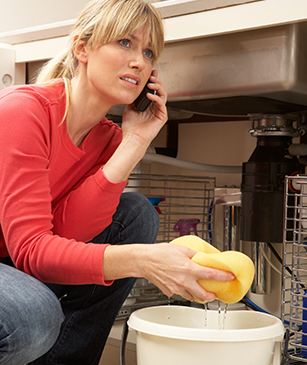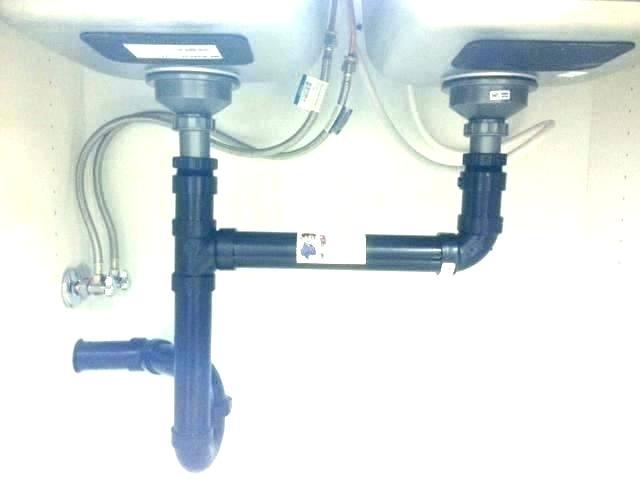Confirmed Solutions for Fixing a Dripping Garbage Disposal
Confirmed Solutions for Fixing a Dripping Garbage Disposal
Blog Article
Just how do you feel when it comes to Garbage Disposal Leaking From Bottom?

Waste disposal unit are necessary kitchen area appliances that help in throwing away food waste efficiently. Nonetheless, a dripping garbage disposal can be a discouraging and untidy issue to deal with. Luckily, many leakages can be dealt with easily with a few basic actions. In this article, we will discuss how to take care of a leaking waste disposal unit successfully.
Introduction
Waste disposal unit are installed under kitchen area sinks and are developed to shred food waste right into smaller pieces, allowing it to travel through the pipes system conveniently. While these tools are usually dependable, leakages can occur with time due to damage, loosened connections, or damages to the system.
Step-by-Step Guide to Repairing a Leaking Waste Disposal Unit
Turn Off the Power
Before attempting any kind of repair services, make certain that the power to the garbage disposal unit is switched off to avoid the risk of electrical shock.
Find the Leak
Determine the precise location of the leakage and determine the cause
Tighten up Links
Make use of a wrench to tighten any type of loosened connections between the disposal system and the pipes system.
Change Seals or Gaskets
If the leak is because of worn seals or gaskets, eliminate the old parts and replace them with brand-new ones.
Patching Splits or Openings
For fractures or holes in the disposal unit, use epoxy or a suitable patching material to seal the broken location.
Recognizing the Resource of the Leak
Before attempting to fix a dripping garbage disposal, it is essential to recognize the resource of the leak. This can usually be done through visual examination or by carrying out easy examinations.
Visual Assessment
Examine the garbage disposal unit meticulously for any type of indicators of water leak. Pay close attention to locations around seals, gaskets, and connection factors.
Testing for Leakages
One way to check for leaks is by running water via the disposal unit and looking for any kind of visible indicators of leakage.
Usual Causes of Leakages in Waste Disposals
Worn Seals and Gaskets
Seals and gaskets play an important function in stopping water from dripping out of the garbage disposal. In time, these elements can wear away, leading to leaks around the disposal system.
Loose Connections
The links in between the waste disposal unit and the plumbing system can come to be loose in time, triggering water to leakage out during procedure.
Cracks or Openings in the Disposal Device
Physical damages to the waste disposal unit, such as splits or openings in the real estate, can also result in leaks.
Tools and Materials Needed for Taking Care Of a Dripping Waste Disposal Unit
Prior to beginning the repair work process, gather the required tools and materials, consisting of a screwdriver, flexible wrench, plumber's putty, substitute seals or gaskets, and epoxy or patching product for repairing splits or openings.
Evaluating the Garbage Disposal After Repair
As soon as the repair service is total, check the garbage disposal by running water through it to guarantee that the leakage has been dealt with.
Preventive Upkeep Tips to Prevent Future Leaks
To avoid future leaks, it is important to carry out routine maintenance on your waste disposal unit. This consists of maintaining it tidy, preventing placing non-food items or difficult things down the disposal, and regularly looking for leakages or other issues.
Final thought
Finally, fixing a leaking waste disposal unit is a reasonably straightforward process that can be completed with fundamental tools and materials. By complying with the steps detailed in this post and exercising preventative upkeep, you can maintain your waste disposal unit in good working problem and avoid expensive repair work in the future.
HERE’S HOW TO FIX YOUR GARBAGE DISPOSAL
WHAT TO DO IF SOMETHING IS STUCK IN YOUR GARBAGE DISPOSAL
If the impeller won’t turn, there’s probably something stuck in the disposal. It could be a steak bone or peach pit, although plumbers report pulling all sorts of inappropriate objects out of disposals, such as bottle caps or aluminum foil. Make sure power to the disposal is off, and look inside to see if you can see the source of the jam.
Never stick your fingers in a disposal. Pull out anything you see with tongs or pliers.
If the disposal still won’t work, it may be time to call a plumber or consider buying a new disposal. GEM Plumbing & Heating is here for all of your garbage disposal needs.
WHAT TO DO IF YOUR GARBAGE DISPOSAL DRAIN IS CLOGGED
Take everything out from underneath your sink and put a bucket or other container under your disposal to catch any water that drains out. Disconnect your disposal from the power supply. If it’s plugged into a wall outlet, unplug it. If it’s hardwired into an electrical box, go to the electrical panel and turn off the breaker for the disposal. Pour ¼ cup of baking soda into the drain, followed by ½ cup of white vinegar. Give the solution a few minutes to fizz and do its work. Look into the disposal with a flashlight to see if you can see an object that might be causing the clog. If you see it, remove it using tongs or pliers. MORE TIPS ON DEALING WITH A CLOGGED GARBAGE DISPOSAL
Never use drain cleaner in a garbage disposal. It can damage the plastic parts inside the disposal. You can also be splashed with the caustic liquid while working to clear the clog. Beware! Never stick your fingers into a garbage disposal. Trust us — not a good idea. In many instances, your dishwasher drains through your garbage disposal. This allows the disposal to grind any large food particles that may be drained out of your dishwasher. There are some jurisdictions, however, where the plumbing code prohibits such a connection. WHAT TO DO WHEN YOUR DISHWASHER DRAINS THROUGH THE DISPOSAL
Run some water in the sink so your plunger has at least a ½-inch of water to create a seal and plunge vigorously up and down several times. You may need to repeat this several times. Run hot water down the drain to clear any residue that remains.

As a passionate reader about Why Is , I was thinking sharing that piece of content was essential. Those who enjoyed our blog posting please remember to pass it around. Thanks a lot for going through it.
Contact Us Now Report this page